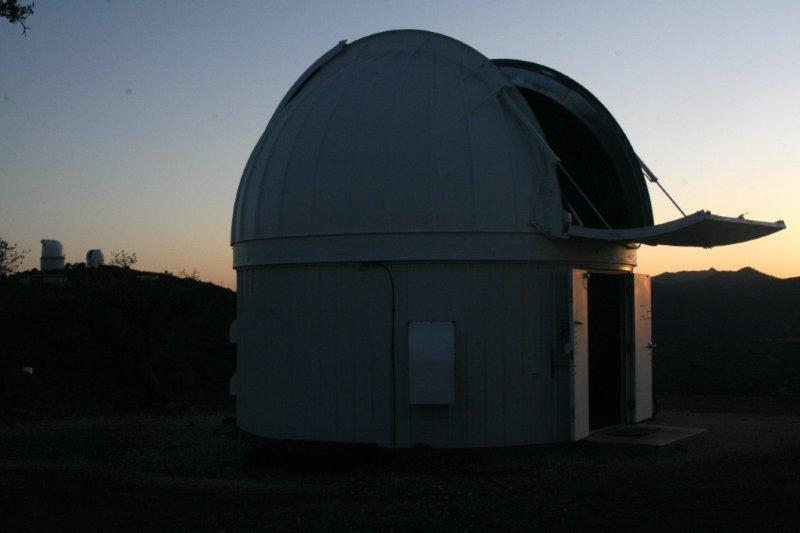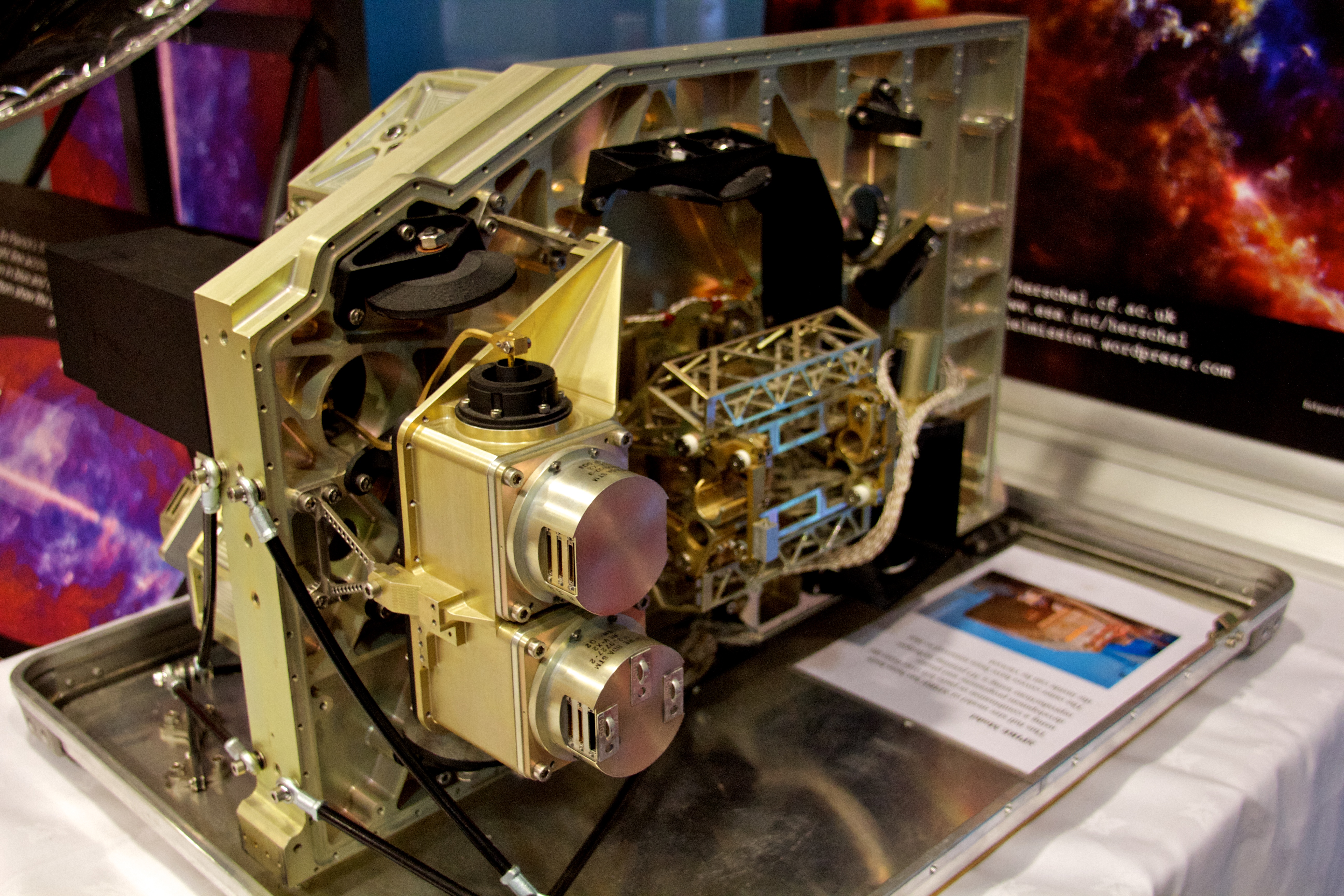|
Faulkes Telescope North
The Faulkes Telescope North is a clone of the Liverpool Telescope, and is located at Haleakala Observatory in the U.S. state of Hawaii. It is a f/10 Ritchey-Chrétien telescope. The telescope is owned and operated by LCOGT. This telescope and its sister telescope Faulkes Telescope South are used by research and education groups around the globe. The Faulkes Telescope Project is one such group which provides observing time (awarded by LCOGT) for educational projects for UK schools and amateur astronomers. In 2013, it imaged the defunct Herschel Space Observatory. See also *List of largest optical reflecting telescopes *Faulkes Telescope South *Liverpool Telescope The Liverpool Telescope (LT) is a two-metre-aperture robotic Ritchey–Chrétien telescope that observes autonomously (without human intervention). However professional astronomers, school groups and other credible registered users submit specif ... References External links Faulkes Telescope Project websiteL ... [...More Info...] [...Related Items...] OR: [Wikipedia] [Google] [Baidu] |
Liverpool Telescope
The Liverpool Telescope (LT) is a two-metre-aperture robotic Ritchey–Chrétien telescope that observes autonomously (without human intervention). However professional astronomers, school groups and other credible registered users submit specifications to be considered by its robotic control system (RCS) at any time using an online graphical user interface. Each night the RCS decides among these choices, and among any notified or glimpsed transient events, what to observe, based on target visibility and weather conditions. The telescope had first light in 2003, and is the brainchild and property of Liverpool John Moores University. Description The RCS has a rapid-response capability where it will often automatically interrupt regular observations to slew (shift) to observe short-lived events with higher priority, such as gamma-ray bursts. The LT is one of the largest robotic telescopes in the world and was built by a subsidiary set up by Liverpool John Moores University w ... [...More Info...] [...Related Items...] OR: [Wikipedia] [Google] [Baidu] |
Hawaii
Hawaii ( ; haw, Hawaii or ) is a state in the Western United States, located in the Pacific Ocean about from the U.S. mainland. It is the only U.S. state outside North America, the only state that is an archipelago, and the only state geographically located within the tropics. Hawaii comprises nearly the entire Hawaiian archipelago, 137 volcanic islands spanning that are physiographically and ethnologically part of the Polynesian subregion of Oceania. The state's ocean coastline is consequently the fourth-longest in the U.S., at about . The eight main islands, from northwest to southeast, are Niihau, Kauai, Oahu, Molokai, Lānai, Kahoolawe, Maui, and Hawaii—the last of these, after which the state is named, is often called the "Big Island" or "Hawaii Island" to avoid confusion with the state or archipelago. The uninhabited Northwestern Hawaiian Islands make up most of the Papahānaumokuākea Marine National Monument, the United States' largest protected area ... [...More Info...] [...Related Items...] OR: [Wikipedia] [Google] [Baidu] |
Las Cumbres Observatory Global Telescope Network
Las Cumbres Observatory (LCO) is a network of astronomical observatories run by a non-profit private operating foundation directed by the technologist Wayne Rosing. Its offices are in Goleta, California. The telescopes are located at both northern and southern hemisphere sites distributed in longitude around the Earth. For some astronomical objects, the longitudinal spacing of telescopes allows continuous observations over 24 hours or longer. The operating network currently consists of two 2 meter telescopes, nine 1 meter telescopes, and seven 40 cm telescopes, placed at six astronomical observatories. The network operates as a single, integrated, observing facility, using a software scheduler that continuously optimizes the planned observing schedule of each individual telescope. History Rosing incorporated Las Cumbres Observatory in 1993 with the goal of aiding universities, observatories, and individuals in the acquisition and improvement of telescopes, opt ... [...More Info...] [...Related Items...] OR: [Wikipedia] [Google] [Baidu] |
Faulkes Telescope South
The Faulkes Telescope South is a clone of the Liverpool Telescope and is located at Siding Spring Observatory in New South Wales, Australia. It is a Ritchey-Chrétien telescope. It was designed to be operated remotely with the aim of encouraging an interest in science by young people. It is supported by an altazimuth mount. The telescope is owned and operated by LCOGT. This telescope and its sister telescope Faulkes Telescope North are used by research and education groups across the globe. The Faulkes Telescope Project is one such group which provides observing time (awarded by LCOGT) for educational projects for UK schools. Funds were initially sourced by charitable donations from philanthropist Dr. Martin C. Faulkes. Faulkes Telescope South saw first light in 2004 with full operations occurring by 2006. Discoveries 2008 HJ is a small near-Earth asteroid which at the time of its discovery was the most rapidly rotating object in the solar system. Observations On the ... [...More Info...] [...Related Items...] OR: [Wikipedia] [Google] [Baidu] |
Faulkes Telescope Project
The Faulkes Telescope Project (FTP) is supported by the Dill Faulkes Educational Trust. It provides access to 1,500 hours of observing time on two 2-metre class telescopes located in Hawaii (Faulkes Telescope North in Hawaii) and Australia (Faulkes Telescope South in Australia). This time is dedicated to education and public outreach, mainly in the UK, but also for smaller, selected projects in Europe and the US. FTP has operated a UK-wide educational programme since 2004, and currently works with science education projects across Europe and further afield (e.g. USA, Russia, Israel), including many EU-based science, maths and ICT programmes. FTP specialises in providing physics and maths education and outreach via astronomy and space science, utilising the unique access it can provide to research-grade facilities. The basic philosophy is to engage learners in “real science”, making them active participants in a range of astronomical research projects, ranging from observat ... [...More Info...] [...Related Items...] OR: [Wikipedia] [Google] [Baidu] |
Herschel Space Observatory
The Herschel Space Observatory was a space observatory built and operated by the European Space Agency (ESA). It was active from 2009 to 2013, and was the largest infrared telescope ever launched until the launch of the James Webb Space Telescope in 2021. Herschel carries a mirror and instruments sensitive to the far infrared and submillimetre wavebands (55–672 µm). Herschel was the fourth and final cornerstone mission in the Horizon 2000 programme, following ''SOHO''/'' Cluster II'', '' XMM-Newton'' and ''Rosetta''. The observatory was carried into orbit by an Ariane 5 in May 2009, reaching the second Lagrangian point (L2) of the Earth–Sun system, from Earth, about two months later. Herschel is named after Sir William Herschel, the discoverer of the infrared spectrum and planet Uranus, and his sister and collaborator Caroline Herschel. The observatory was capable of seeing the coldest and dustiest objects in space; for example, cool cocoons where stars for ... [...More Info...] [...Related Items...] OR: [Wikipedia] [Google] [Baidu] |
List Of Largest Optical Reflecting Telescopes
A ''list'' is any set of items in a row. List or lists may also refer to: People * List (surname) Organizations * List College, an undergraduate division of the Jewish Theological Seminary of America * SC Germania List, German rugby union club Other uses * Angle of list, the leaning to either port or starboard of a ship * List (information), an ordered collection of pieces of information ** List (abstract data type), a method to organize data in computer science * List on Sylt, previously called List, the northernmost village in Germany, on the island of Sylt * ''List'', an alternative term for ''roll'' in flight dynamics * To ''list'' a building, etc., in the UK it means to designate it a listed building that may not be altered without permission * Lists (jousting), the barriers used to designate the tournament area where medieval knights jousted * ''The Book of Lists'', an American series of books with unusual lists See also * The List (other) * Listing (di ... [...More Info...] [...Related Items...] OR: [Wikipedia] [Google] [Baidu] |
Optical Telescopes
An optical telescope is a telescope that gathers and focuses light mainly from the visible part of the electromagnetic spectrum, to create a magnified image for direct visual inspection, to make a photograph, or to collect data through electronic image sensors. There are three primary types of optical telescope: * Refracting telescopes, which use lenses and less commonly also prisms (dioptrics) * Reflecting telescopes, which use mirrors ( catoptrics) * Catadioptric telescopes, which combine lenses and mirrors An optical telescope's ability to resolve small details is directly related to the diameter (or aperture) of its objective (the primary lens or mirror that collects and focuses the light), and its light-gathering power is related to the area of the objective. The larger the objective, the more light the telescope collects and the finer detail it resolves. People use optical telescopes (including monoculars and binoculars) for outdoor activities such as observation ... [...More Info...] [...Related Items...] OR: [Wikipedia] [Google] [Baidu] |
Robotic Telescopes
A robotic telescope is an astronomical telescope and detector system that makes observations without the intervention of a human. In astronomical disciplines, a telescope qualifies as robotic if it makes those observations without being operated by a human, even if a human has to initiate the observations at the beginning of the night or end them in the morning. It may have software agents using artificial intelligence that assist in various ways such as automatic scheduling. A robotic telescope is distinct from a remote telescope, though an instrument can be both robotic and remote. By 2004, robotic observations accounted for an overwhelming percentage of the published scientific information on asteroid orbits and discoveries, variable star studies, supernova light curves and discoveries, comet orbits and gravitational microlensing observations. All early phase gamma ray burst observations were carried by robotic telescopes. Design Robotic telescopes are complex systems that t ... [...More Info...] [...Related Items...] OR: [Wikipedia] [Google] [Baidu] |
Astronomy In The United Kingdom
Astronomy () is a natural science that studies celestial objects and phenomena. It uses mathematics, physics, and chemistry in order to explain their origin and evolution. Objects of interest include planets, moons, stars, nebulae, galaxies, and comets. Relevant phenomena include supernova explosions, gamma ray bursts, quasars, blazars, pulsars, and cosmic microwave background radiation. More generally, astronomy studies everything that originates beyond Earth's atmosphere. Cosmology is a branch of astronomy that studies the universe as a whole. Astronomy is one of the oldest natural sciences. The early civilizations in recorded history made methodical observations of the night sky. These include the Babylonians, Greeks, Indians, Egyptians, Chinese, Maya, and many ancient indigenous peoples of the Americas. In the past, astronomy included disciplines as diverse as astrometry, celestial navigation, observational astronomy, and the making of calendars. Nowadays, professional ... [...More Info...] [...Related Items...] OR: [Wikipedia] [Google] [Baidu] |




